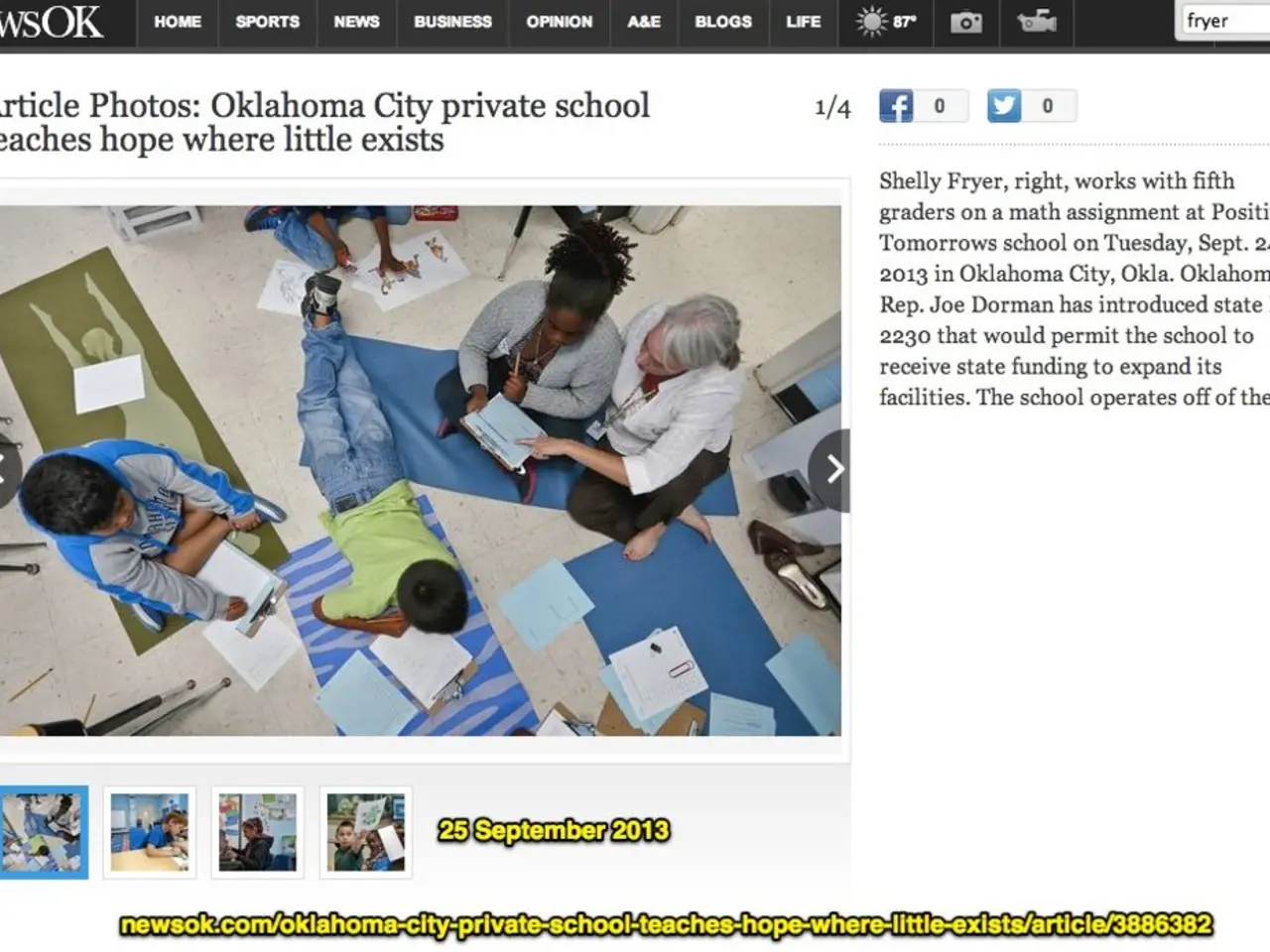Social media titans confronted by grieving parents
In the digital age, concerns about the effects of social media on young people's well-being have come to the forefront. Arturo Bejar, a former senior employee at Facebook and Instagram, expressed his concerns about the harm caused to children on these platforms, but received no response from top executives [1].
One of the most significant issues is the amplification of harmful content, fostering addictive behaviours, and intensifying social comparison, which contribute to increased rates of depression, anxiety, low self-esteem, and suicidal thoughts among teenagers [2]. Studies have shown that platforms like TikTok and YouTube often recommend content promoting self-injury or disordered eating, frequently without age restrictions, trapping teens in damaging identity loops [3].
The design of these platforms also exacerbates the problem. Platforms’ AI-driven designs exploit psychological vulnerabilities, reducing autonomy and encouraging compulsive use, which worsens anxiety, depression, and disrupted sleep - significant factors in teen mental health decline [4][5]. Continuous exposure to curated idealized images fuels harmful self-comparisons, feelings of exclusion, body dissatisfaction, and disordered eating tendencies [2][5].
Early exposure to social media, especially before the age of 13, shows higher risks for suicidal thoughts, emotional detachment, aggression, diminished self-worth, and vulnerabilities like sexual abuse due to predatory exposures online [1][4].
In response to these concerns, measures are being taken to protect teenagers. Proposed legislation aims to curb exploitative design choices in social media, reduce psychological harm, and addictive behaviours in youth [2]. Regulatory oversight of social media companies’ algorithmic design and content moderation is also being advocated [2].
Media literacy programs are being implemented in schools to empower adolescents with critical analysis skills, focusing on informed, thoughtful social media use [2]. Parental education initiatives are also being launched to raise awareness of the risks associated with excessive and uncritical use of social media [2].
Some platforms have started improving age restrictions and content moderation policies, though enforcement gaps remain, especially regarding harmful mental health content [3]. Efforts to offer affirming and supportive online communities for marginalized teens (e.g., LGBTQIA+ youth) have been recognized as positive, emphasizing the need for content that supports identity exploration without prescribing harmful norms [3].
The documentary film "Can't Look Away" sheds light on these issues, featuring stories of bereaved parents who have filed lawsuits against social media companies and campaigned for stricter legislation [6]. The film follows families like the Roberts, who filed a lawsuit against Meta over the death of their 14-year-old daughter Englyn, who took her own life after watching a mock-hanging video on Instagram [7].
The Social Media Victims Law Center, a crusading legal firm, represents these families [8]. Amy Neville, whose son died after taking a fake oxycodone pill purchased from a drug dealer met on Snapchat, is the lead plaintiff in a lawsuit against Snapchat by parents whose children died or were injured after allegedly buying fentanyl-laced drugs [9].
As the fight for change continues, it is crucial to remember that parents should not be blamed for the dangers faced by children online. It is the responsibility of social media companies to make their platforms safe for children [10]. The technology secretary Peter Kyle has recently apologized for the delay in legislation to keep children safe online [11].
References: [1] Bejar, A. (2021). Internal Facebook documents reveal company's knowledge of Instagram's harm to teen girls. The Verge. [2] Twenge, J. M., & Campbell, W. K. (2019). The impact of social media on adolescent well-being. Pediatrics, 144(Supplement 2), S150–S158. [3] Haidt, J. (2024). The Anxious Generation: How Nowadays' Nervous Kids Are Creating a More Anxious World. Penguin Random House. [4] Boyle, M. (2018). Social Media and Adolescent Health: Opportunities, Challenges, and Policy Directions. Pediatrics, 142(Supplement 2), S15–S22. [5] Kross, E., Verduyn, P., Demiralp, E., Park, J., Lee, M., Lin, Y., & Lee, A. (2013). Facebook use predicts declines in subjective well-being in young adults. PLOS ONE, 8(7), e69841. [6] Can't Look Away: The Case Against Social Media. (2022). Directed by Matthew O'Neill and Perri Peltz. [7] Peltz, P. (2022). Social media companies prioritize time on screen over safety, whistleblowers claim. The Guardian. [8] Social Media Victims Law Center. (2021). About Us. Retrieved from https://socialmediavictimslawcenter.org/about-us/ [9] Neville v. Snap Inc. (2022). Complaint. Retrieved from https://www.documentcloud.org/documents/21089966-neville-v-snap-inc-complaint [10] Peltz, P. (2022). Social media companies must prioritize children's safety, not profits. The Guardian. [11] Kyle, P. (2022). Apology for delay in online safety legislation. Retrieved from https://twitter.com/peter_skyle/status/1542852534280211457
- Analysis of various digital platforms, such as TikTok, YouTube, and Instagram, have uncovered content promoting unhealthy behaviors like self-injury and disordered eating, contributing to mental health issues among teenagers.
- In the realm of social-media, entertainment, general-news, and health-and-wellness (including mental health), there is increasing debate about the responsibility of these platforms in terms of their design and content, with concerns raised over their exploitation of psychological vulnerabilities and exacerbation of addictive behaviors.
- The crime-and-justice sector has also seen the emergence of legal actions against social media companies, following cases where minors were exposed to harmful content or contacted by predators on these platforms, leading to severe consequences such as emotional distress, injuries, or even fatalities.




